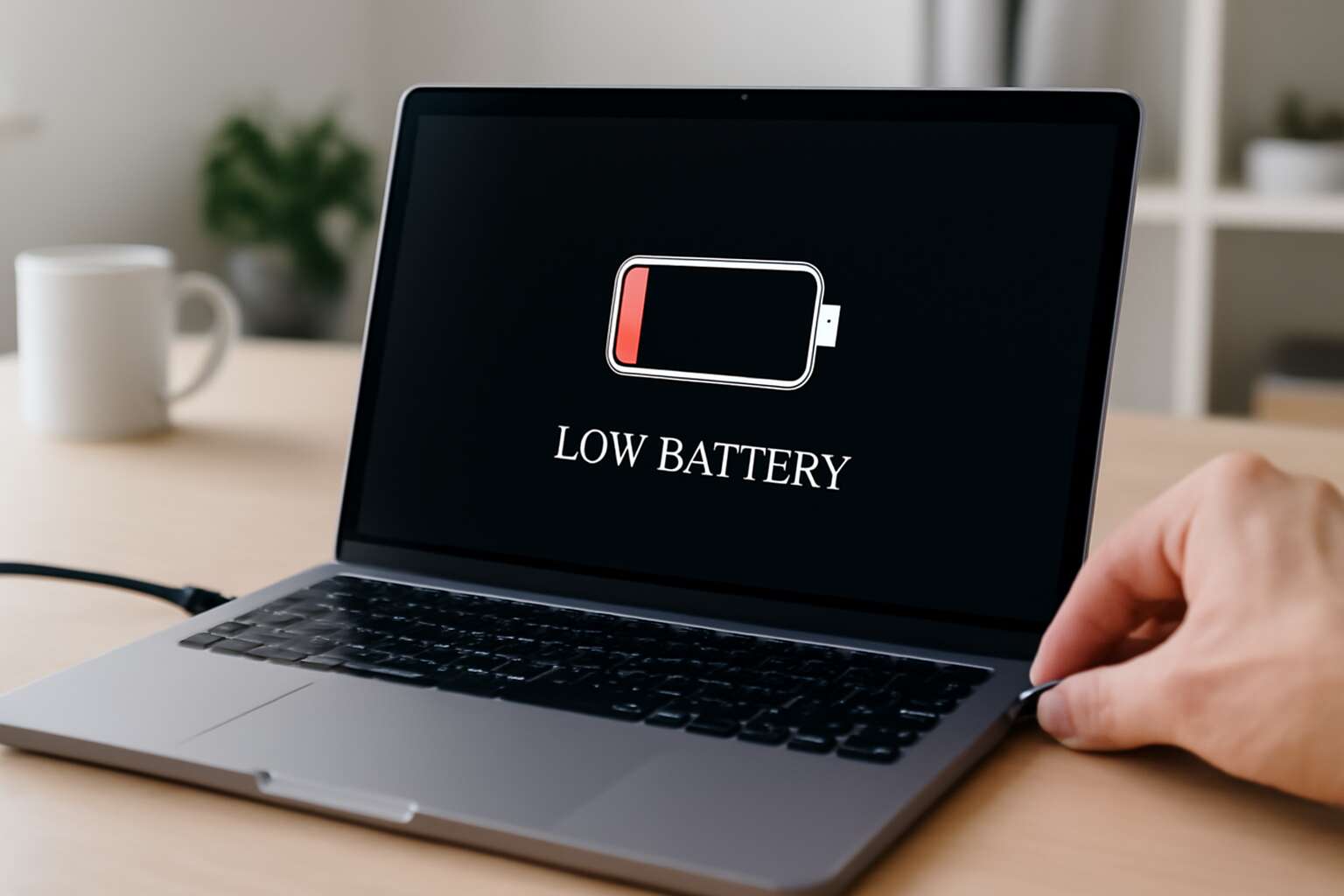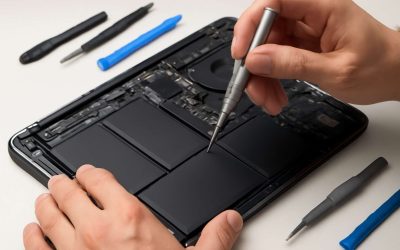Understanding Laptop Batteries
Overview of Laptop Battery Technology – Types of batteries used in laptops (Li-ion, Li-polymer, etc.) and their characteristics.
Modern laptop batteries are marvels of engineering, yet few users truly understand the complexities behind their design. At the heart of these devices lies a sophisticated chemistry—primarily lithium-ion (Li-ion) and lithium-polymer (Li-polymer) batteries—that powers our digital lives. These energy sources are prized for their high energy density, lightweight nature, and ability to withstand numerous charge cycles. However, when the battery reaches the end of its lifespan, the question arises: what happens when laptop battery dies? The answer involves more than just a loss of power; it signifies a critical point in the device’s functionality.
Li-ion batteries, the most common type found in laptops, operate through a delicate balance of ions moving between anode and cathode. Over time, this process gradually diminishes their capacity, leading to decreased runtime and, eventually, total failure. Lithium-polymer batteries, with their flexible form factors, tend to age more gracefully but are still susceptible to capacity loss. Understanding these distinctions is vital, especially when considering the implications of a laptop battery dying, which can range from sudden shutdowns to data corruption. To grasp the full picture, it’s essential to recognise the characteristics and limitations of each battery type.
How Laptop Batteries Work – Basic principles of how batteries store and supply power to laptops.
Understanding how laptop batteries work is like unlocking a hidden world of energy magic. At their core, these devices store power through a delicate dance of chemical reactions, releasing energy when needed to keep your laptop alive. Lithium-ion (Li-ion) and lithium-polymer (Li-polymer) batteries rely on the movement of ions between electrodes, transforming chemical energy into electrical power seamlessly. When you power up your device, a controlled flow of ions generates the electricity that fuels your screen, keyboard, and internal components.
However, as the battery ages, this process becomes less efficient. The capacity diminishes, and eventually, the battery can no longer supply sufficient power, leading to what happens when laptop battery dies. During this critical moment, your device may suddenly shut down, leaving unsaved work lost in the digital abyss. The battery’s inability to sustain the necessary energy flow signifies more than just a depleted power source; it marks a turning point in your laptop’s lifecycle, often signalling the need for a replacement to restore its vitality.
Battery Lifespan and Limitations – Factors that affect battery lifespan and performance.
Every battery has a story, and as it ages, its chapters become more fragile. Understanding what happens when laptop battery dies reveals a tale of wear, tear, and inevitable decline. The lifespan of a laptop battery is influenced by a symphony of factors—daily usage patterns, temperature, and how often it’s charged and discharged all play their part. Over time, the chemical magic within begins to falter, reducing capacity and efficiency.
Temperature, in particular, acts like a double-edged sword—extreme heat accelerates degradation, while cold can temporarily diminish performance. Additionally, frequent full discharges can strain the battery’s internal structure, hastening its decline. It’s essential to recognise these limitations, as they highlight the fine line between a healthy power source and one that is nearing its final act.
When a battery reaches the end of its journey, the question of what happens when laptop battery dies becomes starkly real. The device may shut down unexpectedly, leaving you in the digital dark. This abrupt silence is not just inconvenient; it’s a sign that the battery’s energy reserves have been exhausted beyond repair. The magic of chemical reactions has essentially come to a halt, signalling the need for a replacement to reignite the laptop’s vitality.
Immediate Effects When Laptop Battery Dies
Sudden Shutdown of the Laptop – What happens physically and what it means for ongoing processes.
When the laptop battery suddenly dies, the immediate aftermath is a jarring interruption that can feel almost visceral—a stark flash of silence amid ongoing digital activity. Physically, the abrupt power cut halts all processes instantaneously, leaving the system in a state of suspended animation. For users engaged in critical tasks, this sudden shutdown can result in data loss or corruption, as unsaved information vanishes into the ether.
What happens when laptop battery dies isn’t just a matter of inconvenience; it strikes at the core of digital stability. The unforeseen cessation can also induce hardware stress—particularly on the hard drive and volatile memory—potentially shortening the overall lifespan of the device. In some cases, it may trigger system errors or boot issues, forcing users into troubleshooting marathons.
This scenario underscores a crucial reality: the moment the power is cut, ongoing processes are abruptly halted, often leaving behind fragments of incomplete work and raising questions about the resilience of both hardware and data integrity.
Loss of Unsaved Data – Risks of data loss when power is unexpectedly cut off.
When the laptop battery suddenly dies, the immediate consequence is a sharp cut in power that leaves users stranded mid-task. This abrupt shutdown can lead to significant data loss, especially if files weren’t saved beforehand. Unsaved work, whether it’s a crucial report or a creative project, vanishes instantaneously, often leaving frustration in its wake.
The risks aren’t limited to just losing work. The sudden power cut can cause system errors, corrupt files, or even damage hardware components over time. For example, volatile memory, like RAM, can become unstable after frequent abrupt shutdowns, impacting overall system stability.
Understanding what happens when laptop battery dies highlights the importance of regular backups and autosave features. It’s a stark reminder that relying solely on battery power without safeguards can expose users to unnecessary digital chaos.
Impact on Running Applications – Effects on open applications and system stability.
When the laptop battery suddenly dies, the immediate impact on running applications can be startling. Open programs often freeze or close abruptly, leaving users in a state of disarray. This sudden loss of power halts processes mid-flow, which can cause a cascade of system instability. The delicate harmony between hardware and software is disrupted in an instant, sometimes resulting in corrupted files or system errors.
For instance, unsaved work in creative or professional applications is lost without warning. The abrupt shutdown doesn’t allow for proper saving or closing routines—an unsettling reminder of how fragile digital workspaces can be. Over time, frequent instances of what happens when laptop battery dies can lead to hardware issues, such as unstable RAM or corrupted system files. This underscores the importance of understanding the stakes involved with sudden power loss and the hidden vulnerabilities lurking beneath the surface of our reliance on portable technology.
Potential Hardware and Software Impacts
Hardware Risks – Potential damage to internal components from sudden power loss.
When a laptop battery suddenly dies, the hardware is put under immense stress. This abrupt power loss can lead to potential damage to internal components, especially if the device is actively performing read/write operations. The delicate circuitry within the motherboard, for instance, may experience voltage spikes or power surges that could cause irreversible harm. Such hardware risks are often underestimated but can result in costly repairs or data corruption.
In extreme cases, the sudden shutdown may also impact the battery’s connection points, leading to long-term degradation. Additionally, the abrupt cessation of power can trigger system errors that jeopardise the stability of the entire laptop. For those who rely heavily on their devices, understanding these hardware risks highlights the importance of battery maintenance and proper shutdown procedures. After all, knowing what happens when laptop battery dies helps prevent avoidable hardware failures and preserves the longevity of your machine.
Operating System Behavior – How different OSes handle battery depletion and shutdown procedures.
The moment a laptop battery dies unexpectedly, the operating system’s behaviour can become a critical factor in how smoothly the device recovers—or falters. Different OSes, such as Windows, macOS, or Linux, handle sudden power depletion with varying degrees of grace. Some may initiate an automatic shutdown, safeguarding active processes, while others might abruptly halt, risking data corruption or system errors. This divergence highlights how vital understanding what happens when laptop battery dies is for maintaining system integrity.
For instance, Windows systems often attempt to prompt users to save work before shutdown, but if the power loss is instantaneous, unsaved data can vanish in the blink of an eye. Conversely, macOS employs a more refined approach, with background processes designed to protect ongoing work, but even then, unexpected shutdowns can lead to system inconsistencies. The critical point is that the operating system’s shutdown procedures are directly linked to how well your device can handle abrupt power loss, ultimately impacting software stability and data security.
- Automatic system shutdowns to protect hardware and data integrity
- Potential for file system corruption if processes are interrupted mid-write
- Variability in how applications respond—some may crash, others recover gracefully
Understanding what happens when laptop battery dies is not just about hardware; it’s about the intricate dance between software resilience and hardware vulnerability. When the power suddenly cuts, the operating system’s response can make all the difference between a quick recovery and a costly data recovery effort. Knowing these nuances helps users appreciate the importance of proper shutdown procedures and the potential risks lurking behind a dead battery.
System Errors and Boot Issues – Possible errors or issues after restarting due to improper shutdown.
When a laptop battery dies unexpectedly, the consequences extend beyond mere inconvenience. The abrupt power loss can trigger system errors that ripple through your device’s core, sometimes leaving behind a trail of digital chaos. Files that were mid-write risk becoming corrupted, especially if they weren’t saved beforehand. This interruption can lead to boot issues, with the operating system struggling to restart correctly or recognising damaged file structures.
In some cases, the device may enter a state of limbo, stuck on error screens or endlessly attempting to repair itself. The potential hardware impact is not negligible either; internal components might sustain damage if sudden shutdowns happen repeatedly, shortening the lifespan of sensitive parts like the motherboard or storage drives.
Understanding what happens when laptop battery dies is essential for appreciating the delicate balance between hardware resilience and software stability. The aftermath can be a frustrating maze of system errors and boot issues, often requiring professional intervention to restore normalcy.
Preventive Measures and Best Practices
Monitoring Battery Health – Tools and settings to check battery status.
Even the most advanced laptops can fall victim to the silent menace of a dead battery, leaving users stranded in a digital abyss. Preventive measures and best practices for monitoring battery health are crucial to avoid this nightmare scenario. Modern laptops come equipped with tools and settings designed to keep an eye on the battery’s condition, alerting you long before it’s too late.
Most operating systems offer built-in battery health monitoring features. For instance, Windows users can access the Battery Report via Command Prompt, revealing detailed insights about capacity and lifespan. MacBook users can utilise the System Information app to check cycle counts and overall health status. Additionally, third-party applications like BatteryCare or CoconutBattery provide real-time data and predictive analytics.
Regularly checking these indicators can help you anticipate when the battery is nearing the end of its lifespan. Remember, keeping your battery between 20-80% charge and avoiding extreme temperatures can extend its longevity. Awareness and proactive monitoring are your best allies in preventing the dreaded moment of what happens when laptop battery dies.
Using AC Power Effectively – Best practices for staying plugged in and avoiding sudden shutdowns.
Ensuring uninterrupted productivity in a world that never pauses requires thoughtful engagement with your device’s power sources. Using AC power effectively is a cornerstone of preventing the dreaded moment of what happens when laptop battery dies. When plugged in correctly, your laptop can operate seamlessly, safeguarding your work from sudden shutdowns that threaten data integrity and system stability.
To optimise this, consider establishing a consistent routine: keep your laptop connected during intensive tasks or long meetings, and avoid letting the battery drain to critically low levels. A simple yet powerful practice is to use a surge protector—this shields your device from voltage spikes that could cause unforeseen damage, especially if power fluctuations occur unexpectedly.
- Maintain a steady connection to AC power whenever possible.
- Monitor your battery’s health regularly to anticipate potential failures.
- Avoid exposing your laptop to extreme temperatures, which can accelerate battery degradation.
By adopting these best practices, you preserve not only your device’s longevity but also your peace of mind—reducing the chances of encountering what happens when laptop battery dies at the most inconvenient moment. Staying plugged in isn’t just about convenience; it’s a shield against the chaos of unexpected shutdowns and data loss, allowing your digital journey to remain elegant and unbroken.
Data Protection Tips – Regular backups and autosave features.
Data loss remains one of the top worries when considering what happens when laptop battery dies unexpectedly. Preventive measures like regular backups and enabling autosave features are essential to safeguard your work. Relying solely on memory isn’t enough—automatic saving ensures that even if power suddenly cuts out, your critical files are protected.
Implementing a consistent backup routine, whether through cloud services or external drives, can save hours of work in a pinch. Many operating systems now offer built-in autosave options, which automatically save your progress at regular intervals. This simple step can mitigate the chaos caused by sudden shutdowns and system errors.
Furthermore, keeping your data protected involves monitoring your battery health and recognising when it’s nearing the end of its lifespan. Combining these practices creates a robust shield against the unpredictable consequences of what happens when laptop battery dies, keeping your workflow steady and your data secure.
What To Do When Your Laptop Battery Dies
Rebooting Your Laptop – Steps to safely restart after a sudden shutdown.
When your laptop battery dies unexpectedly, it can feel like hitting a brick wall. Rebooting your device after a sudden shutdown is essential to restore functionality safely. The key is to avoid forcing a restart that could cause system errors or hardware issues. Instead, follow a systematic approach to get your laptop back online without risking damage.
First, disconnect the laptop from any power source if it’s still plugged in. Wait a moment—sometimes, residual power can cause glitches when restarting. Then, press and hold the power button for about 10 seconds to ensure the device is completely powered off. After that, reconnect the charger and press the power button to turn your laptop back on. This process helps prevent potential hardware risks associated with improper shutdowns.
In some cases, if your laptop does not respond, a forced reboot may be necessary. Keep in mind that frequent sudden shutdowns can accelerate battery wear and increase the likelihood of system errors after rebooting, especially when what happens when laptop battery dies happens repeatedly. Ensuring a proper restart process can help protect your device’s longevity and stability.
Checking for Hardware Damage – Signs to look for and troubleshooting tips.
When your laptop battery dies unexpectedly, it’s more than just an inconvenience — it can be a gateway to hardware damage or data loss. Recognising the signs of hardware damage is crucial in preventing further deterioration. Look out for unusual noises, overheating, or a persistent failure to power on even after reconnecting to power sources. These symptoms may indicate internal components have been affected by sudden shutdowns caused by the battery dying.
To troubleshoot effectively, start by inspecting your device for visible damage, such as swollen battery cells or corrosion around connectors. Sometimes, a simple reset or a thorough check of the power port can reveal underlying issues. If your laptop fails to respond after the battery has died, it might be necessary to test with a different charger or consult a technician for more in-depth diagnostics.
- Check if the battery is swollen or physically damaged.
- Test your charger and power outlet for consistency.
- Run hardware diagnostic tools to assess internal components.
Persistent issues following a sudden shutdown due to a dead battery could signal deeper hardware damage. Addressing these early can prolong your laptop’s lifespan and ensure your data remains protected. Remember, ignoring signs of hardware damage or malfunction risks exacerbating the problem, leading to costly repairs or data loss.
Battery Replacement Options – When and how to replace an aging or faulty battery.
When your laptop battery dies unexpectedly, it’s more than just a moment of inconvenience; it can signal the need for urgent action. Recognising when a battery is reaching the end of its lifespan is essential to prevent potential hardware damage and data loss. If your device suddenly shuts down, it’s wise to consider battery replacement options sooner rather than later. Knowing what happens when laptop battery dies can help you navigate these moments with confidence.
In many cases, replacing an aging or faulty battery is straightforward. Modern laptops often feature removable batteries, making the process simple—just slide out the old one and insert a new, compatible model. For ultrabooks or sealed units, professional replacement might be necessary. It’s advisable to consult your manufacturer’s guidelines or seek a certified technician to ensure compatibility and safety.
- Assess the age and condition of your current battery.
- Purchase a genuine replacement battery suited to your laptop model.
- Follow proper procedures for a safe swap, including powering down and disconnecting from power sources.
Replacing a battery at the right time not only extends your device’s lifespan but also safeguards against the risks associated with degraded power cells. Remember, if you notice signs such as diminished runtime or difficulty charging, it’s time to explore your battery replacement options. Addressing these issues promptly can save you from more serious hardware complications down the line.
Long-Term Solutions and Upgrades
Upgrading Your Laptop Battery – Options for better capacity and longevity.
As the lifespan of your laptop battery approaches its end, exploring long-term solutions and upgrades becomes essential. A simple replacement can breathe new life into your device, especially if you opt for higher capacity batteries designed for longevity. These advanced options not only extend your usage time but also reduce the frequency of unexpected shutdowns—those moments that leave you stranded without warning.
Upgrading your laptop battery is a strategic move, often involving the choice between original equipment manufacturer (OEM) parts or compatible third-party options. For those seeking optimal performance, considering a battery with a higher mAh rating can significantly improve battery life. Additionally, some manufacturers offer modular batteries that are easier to replace, making maintenance less daunting. When selecting an upgrade, ensure compatibility with your specific model to avoid unforeseen issues.
- Assess the current battery health through dedicated diagnostic tools.
- Determine whether your device supports higher-capacity batteries without compromising safety or warranty.
- Choose a reputable supplier to avoid counterfeit components that could jeopardise hardware integrity.
Investing in a quality battery upgrade can be a game-changer, transforming your device from a finicky, short-lived machine into a reliable workhorse. Understanding what happens when laptop battery dies helps you make informed decisions, ensuring you stay ahead of potential hardware failures and maintain productivity without interruption.
Investing in Power Banks or External Batteries – Portable solutions for extended use.
When the lifeblood of your laptop runs dry, and what happens when laptop battery dies, it’s as if the digital world suddenly plunges into shadow. To extend your device’s vitality beyond the confines of its internal battery, investing in power banks or external batteries can be a saviour in moments of need. These portable power sources act as modern-day talismans, offering an enchanted extension of your laptop’s life-force—particularly invaluable during long journeys or critical work sessions.
By harnessing the power of external batteries, you can keep your workflow flowing seamlessly, even when the internal battery refuses to cooperate. Many models come with multiple USB ports or specialised connectors, allowing you to charge other devices simultaneously. For added convenience, some power banks feature high-capacity batteries with fast charging capabilities, ensuring your laptop is replenished swiftly. This strategy transforms potential frustration into a manageable inconvenience, turning the concept of what happens when laptop battery dies into mere background noise. Ultimately, these portable solutions provide a reliable buffer, ensuring your productivity endures—no matter the internal power’s fate.
Maintaining Battery Health for Longevity – Regular care tips to extend battery life.
Maintaining the longevity of your laptop’s internal power source begins with mindful care and strategic upgrades. Regularly monitoring your battery health allows you to identify signs of decline before they compromise your workflow. Tools embedded within your operating system or third-party applications can reveal critical data about battery capacity, cycle count, and overall performance. This proactive approach helps you understand what happens when laptop battery dies unexpectedly, offering you a chance to act before inconvenience turns into data loss or hardware strain.
Upgrading your laptop battery is another crucial step in safeguarding your device’s vitality. Many manufacturers offer high-capacity replacement batteries, which can breathe new life into ageing laptops. These upgrades not only extend operational hours but also bolster the device’s resilience against sudden shutdowns caused by depleted batteries. When considering long-term solutions, selecting a battery with higher mAh ratings or advanced chemistry can significantly improve longevity and performance, reducing the anxiety of unforeseen failures.
For those committed to preserving their laptop’s health, regular care practices are vital. Simple habits such as avoiding extreme temperatures, not letting the battery fully discharge frequently, and keeping the battery within optimal charge levels can make a profound difference. A well-maintained battery is less prone to swelling, capacity loss, and other issues that contribute to the mystery of what happens when laptop battery dies. Ultimately, investing in proper upkeep and thoughtful upgrades transforms the challenge of battery deterioration into a manageable aspect of digital life, ensuring your device remains a faithful companion for years to come.




0 Comments